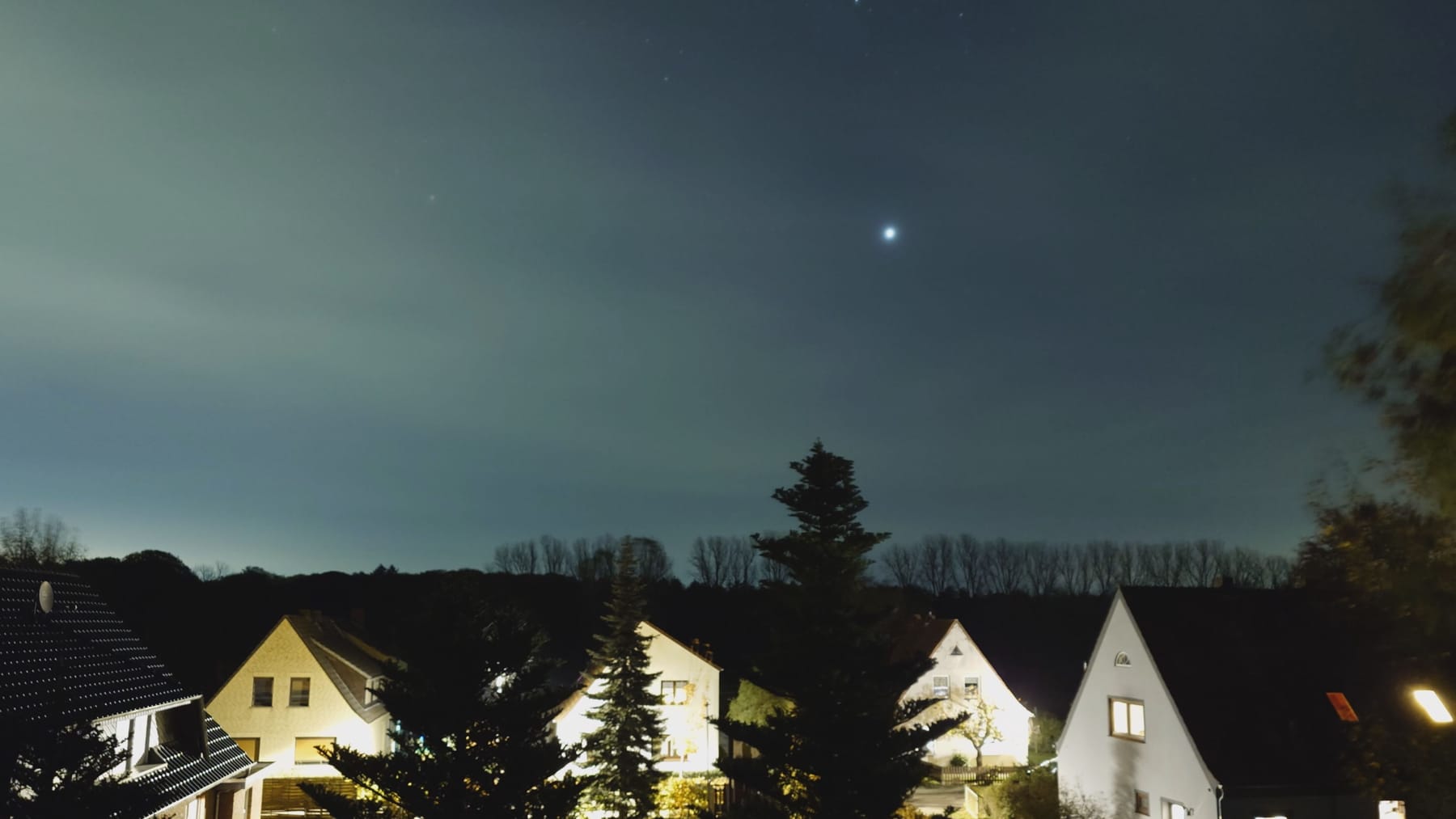Jupiter, the largest planet in our solar system, is currently shining brighter than ever before. You can also enjoy it in Lower Saxony. When is it best to see it?
The largest planet in our solar system is especially easy to see in the night sky this month. On November 3, Jupiter reaches its best position of the year and is closer to Earth than ever before. This means that it shines brighter than any star and is visible all night long.
These days are very easy to see because the Earth passes exactly between the Sun and Jupiter, which in technical terms is called opposition. For this reason, it rises at sunset and sets again at sunrise. Thus the planet can be seen in the sky throughout the night.
Jupiter reached its closest distance to Earth on November 1, at a distance of 596 million km. This is equivalent to about four times the distance between the Earth and the Sun.
Winter constellations and meteor showers in November
As summer ends, dark nights begin early – good conditions for gazing at the starry sky. Now in November, the first great winter constellations such as Orion, Taurus, and Gemini can already be seen. In addition, there are three meteor showers that provide a chance for meteors to fall: Taurus, Leonid, and Andromede. There could be northern lights in northern Germany if the sun releases powerful streams of particles.
However, the most striking lights in the night sky do not belong to the stars, but to two planets: Jupiter and Saturn. The ringed planet accompanies the gas giant on the eastern horizon and rises at about the same time in the evening, but dips below the horizon again around midnight.
At the end of November, a close encounter between Jupiter and the almost full Moon can also be seen: On November 24, Earth’s satellite lies a hand’s width above the bright gas giant on the right. On November 25, the moon will be three inches to the left of Jupiter.
Venus and the Moon will come very close to each other
The second prominently visible planet is Venus, which currently shines as the “morning star” in the early morning. On November 9th, a particularly rare and beautiful celestial spectacle occurs: This morning, the narrow crescent moon stands directly above the bright point of light of the morning star.
If you have the necessary equipment, you can also watch the Moon cover Venus between 10am and 12pm. The brightness of our morning star is so great that with binoculars we can see Venus as a tiny dot in the blue sky. This cosmic spectacle begins over northern Germany at 10:47 a.m.

“Total coffee aficionado. Travel buff. Music ninja. Bacon nerd. Beeraholic.”








More Stories
Coral Seeding: Artificial Insemination Makes Coral More Heat Tolerant
Fear, Anger, and Denial: How People Respond to Climate Change – Research
LKH Graz: Using radiation to combat heart arrhythmias